As part of our work researching and documenting Shetland Oo, this past August, Tom and I met Natalie Cairns-Ratter of the Shetland Tannery. I’d acquired several of Natalie’s beautiful sheepskins on earlier Shetland visits, and was intrigued to learn more about the tanning process, and how her company came about. Small-scale tanning was previously a dying art in Shetland (as indeed in much of the UK), so I wondered what had led Natalie down this route. What I found at the Shetland Tannery was incredibly impressive. Following her own instincts, and her strong desire to make something beautiful and useful from a natural waste product of Shetland island agriculture (the sheepskins left over from the meat industry) Natalie had taught herself the complicated processes of tanning and manufacture from scratch, and built a thriving business on the Northmavine croft where she lives with her husband and small son. While we are working at our desks, Tom and I both sit on one of Natalie’s sheepskins (Tom’s is almost silver, while mine ranges from chocolate brown to pure white in lovely fleckit splodges). When I sit down to knit, my back is warmed by the beautiful shaela Shetland Tannery skin I’ve thrown over the back of my chair. Even Bruce has his own moorit sheepskin, tanned by Natalie, on which he likes to lie in my room while I am working. With their distinctive shades and markings, each of Natalie’s skins is unique and her in-depth knowledge of her product is fascinating. Looking at the different woolly shades that distinguish Shetland sheep, Natalie can tell you in which part of the islands an animal was raised, and about the particular chemical effects of diet and sunlight on its fleece. Working with numerous Shetland crofters and small businesses, Natalie’s business now brings additional value to the economy of Shetland sheep and wool by making good use of something that was simply once discarded. In case you were in any doubt at all, I am a big fan of what Natalie is doing, and I thought you’d like to meet her.
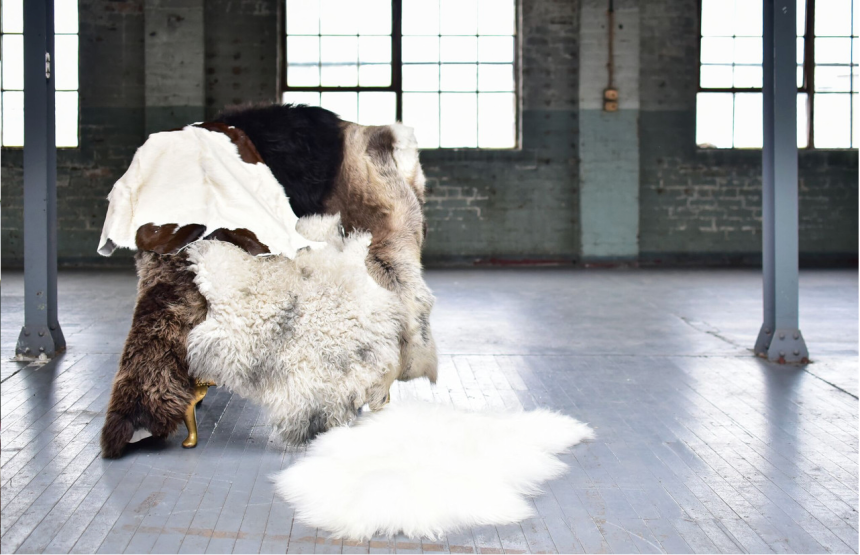
KD: Can you tell us a little about your background, and how you came to live in Shetland?
NCR: I came to live in Shetland in 2010, as I was working on many farms in Scotland during a busy lambing period, and Shetland was my last stop. So when lambing season finished I was allowed out of the shed, and I met my husband! Before I began working in agriculture, I studied violin teaching at University.
KD: I know your interest in developing your business was first piqued by a discussion you had with your sister about a handbag. Can you describe how this conversation led to the establishment of the Shetland Tannery?
NCR: My twin sister and I were simultaneously browsing through beautiful calf-skin handbags on net-a-porter and I said wouldn’t it be great to make products from cowhide or sheepskins? This led to a literal light bulb moment. As soon as I could, I phoned our local slaughterhouse in Lerwick, as I knew they had skins as byproducts of the meat industry. I quickly quizzed them about the skins: did they sell them, was there a potential to work with them, was there a market for such products etc. The more I learned, the more I felt it might be possible to make something beautiful with these skins, rather than simply discarding them. I researched the sheepskin market in Shetland, and worked really hard studying tanning. Then October 2012 came and the Shetland Tannery was established!
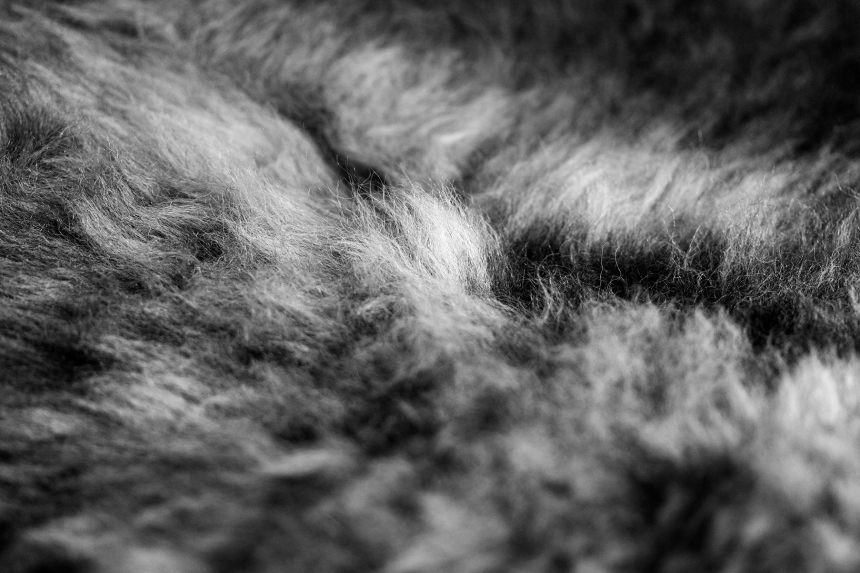
KD: What was involved in your training as a tanner and where did you train?
NCR: I did an awful lot of reading and had many conversations with older crofters who used to tan on Shetland. These older tanners were incredibly helpful, and the advice and techniques I learned from them has really been invaluable. Then I went on an intensive course through a leather company in Northampton, and learned all of the complex ins and outs of the tanning industry. I found there was an awful lot to learn and that trial, error, and practice was required! Tanning is not just following a simple recipe, there are lots of different techniques you have to be familiar with and chemistry you have to get precisely right.

KD: Much of the processing equipment you now use came from former Shetland tanneries. Can you tell us more about the story of the wonderful equipment you’ve managed to acquire and put to good use again?
NCR: When we started researching tanning and the old sheepskin tanning industry on Shetland, we discovered that, though in the 1960s and 70s Shetland had a thriving sheepskin industry, over the past decade or so it had completely died out. The few remaining tanners were elderly, and their families had no interest in carrying on the old craft. But though these families weren’t pursuing tanning for themselves, they were incredibly helpful in encouraging us to get started. If they had not been kind enough to sell us their specialist machinery, we simply would not be operating. We have been so lucky to have been able to purchase their old sheepskin tanning equipment. We acquired a combination of staking machines, which are essential, in turning the hard skin into beautiful soft leather through the process of mechanisation of metal teeth rubbing back and forth. These are specialist machines, crucial for what we do. Also we have some great buffing wheels which were made by the old Shetland tanners specifically for polishing the finished skin. These are simply made from an old car wheel which rotates.
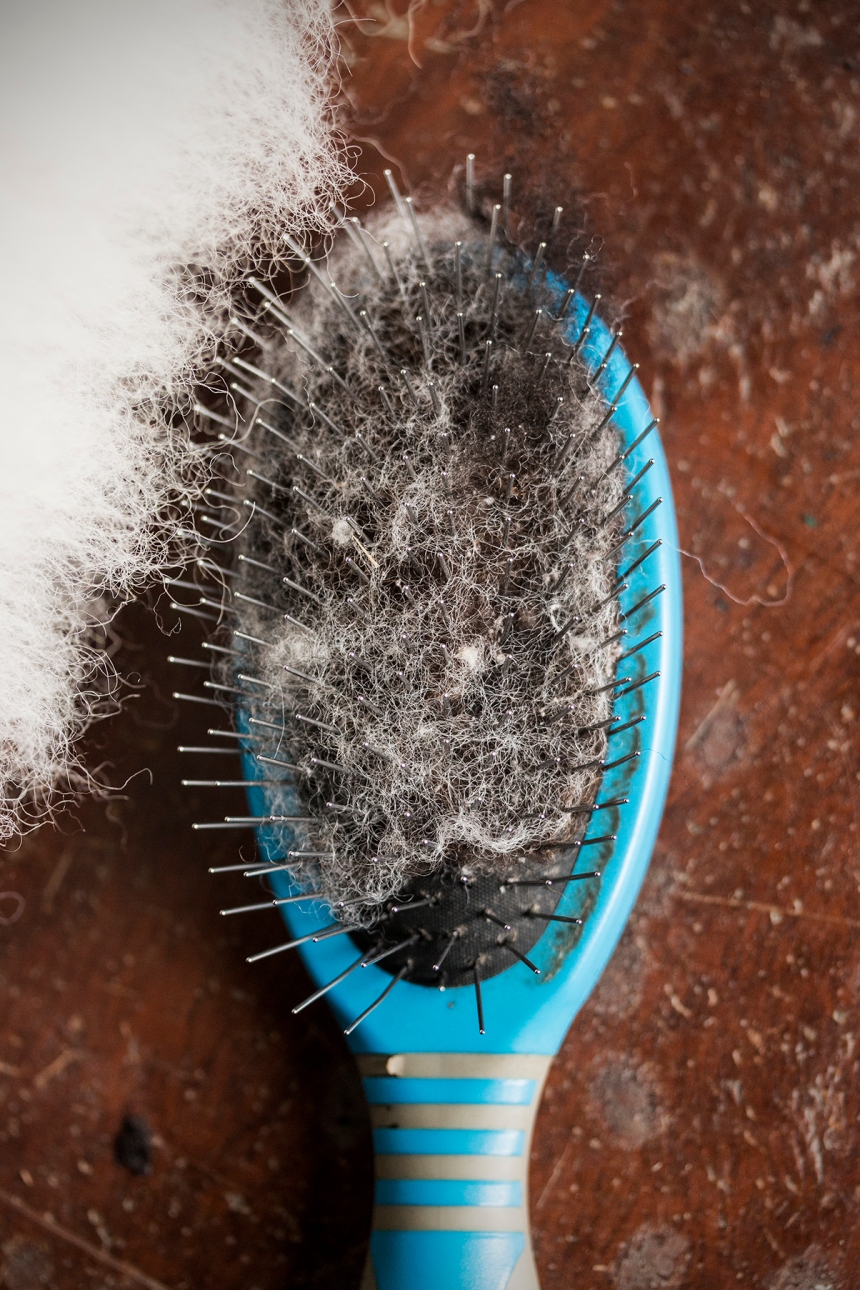
KD: I am unable to resist your sheepskins and now have four in my house. I suspect there are more in my future. But what do you think is so special about Shetland sheepskins?
NCR: Shetland sheepskins are special because they tell the story of our rugged island landscape. The narrative of the seasons and environment is written right through the animals’ skins and fleeces. I find them wonderful to work with because they capture the true essence of the amazing natural colours that are available in every fleece. The sheep who produce our skins have lived a life of true beauty here in Shetland: over the summer months they have fed on our lush heather hills and endured long winters, like the hardy animals they are. Each of our Shetland sheepskins is unique, and each celebrates the life of the animal that produced it.

KD: There are many interesting things about the way you’ve developed your business, but one of the most impressive is your can-do attitude to aquiring new skills in order to create the things that you want to sell. Whats the most interesting skill that you’ve had to learn from scratch?
NCR: The most interesting has to be tanning a sheepskin. Simply because your are turning a raw skin into a developed finished tanned product. And this is all to do with chemistry. In addition I have learned so many skills from starting the Shetland Tannery, from accounting to marketing to customer service, to tanning, to branding, to sewing things like slippers, and developing and perfecting all our products. All of these skills are interesting to me and some I am continually developing!
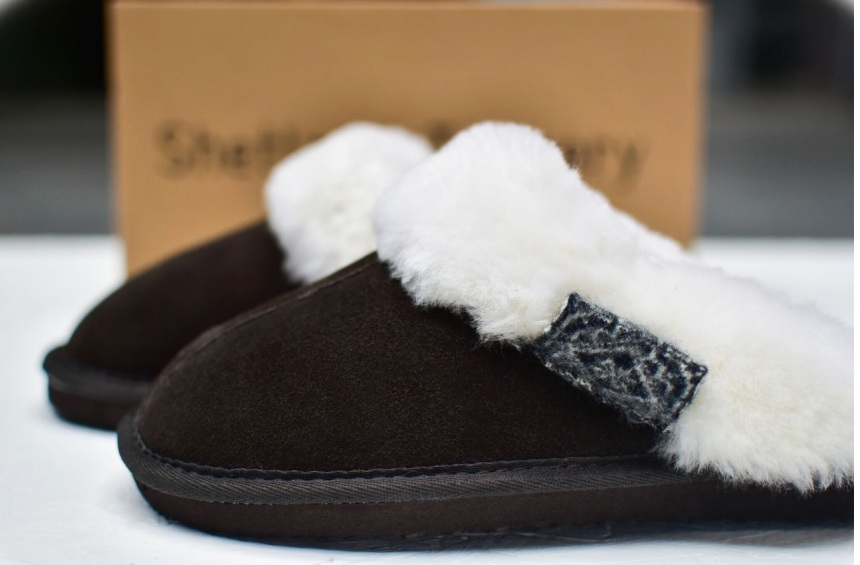
(Shetland sheepskin slippers, made by Natalie)
KD: Do you feel that its important to retain a connection as a maker to the products that you sell? Which element of the making / creating proccess do you most enjoy?
NCR: Yes. I think being a maker is a very personal thing, and if you lose that connection with your products, you almost lose your identity to a certain extent. Making things for a living can be challenging, and if I ever get disheartened, I just go back to the basics of why I do what I do. I go back to the sheep, their characters, the way they communicate. They give so much, and they always remind me why we are celebrating them by using their skins–which are essentially a waste product from the meat industry. I think that being able to share this with our customers is very important.
KD: I love the simplicity of natural sheepy colours and the way that they work effortlessly together. What do you think is distinctive about your aesthetic?
NCR: I think it is simply the Shetland sheep breed itself that makes our products distinctive. They are a small breed, which displays incredible aesthetic variety in all the natural fleece shades. Some of these natural colours are really surprising – blue shades underlying a grey fleece, or pink shades in the moorit. Every single sheepskin is different, but every single one speaks in its own way of the beauty of the Shetland sheep breed.
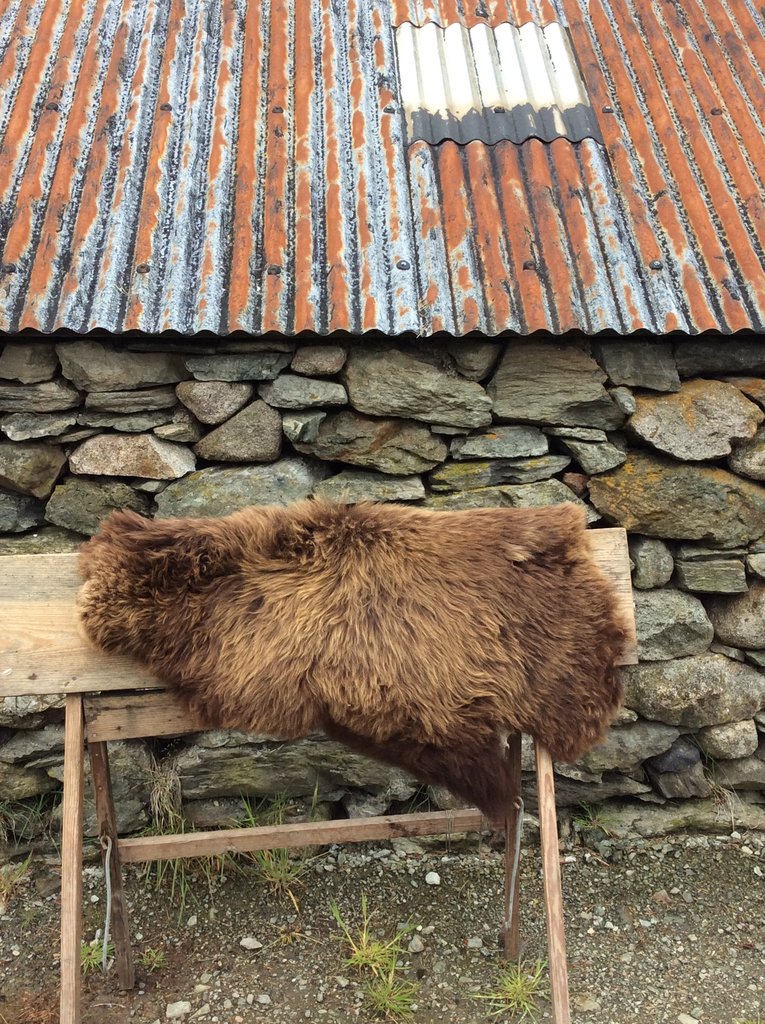
KD: What do your customers enjoy most about your products?
NCR: I think our customers enjoy our story. They like that our products are crafted here in Shetland and that we are crofters carrying on a craft that has always been in Shetland. Our customers now come from all over the world, from large retail orders to bespoke individual orders from Canada, to Germany.
KD: Finally, what’s next for the Shetland Tannery?
NCR: Well, we are hoping to open a new workshop next year, as our present space is now far too small! As long as we can keep supplying Shetland sheepskins to the world, then we are happy! Shetland has such wonderful wool products, and my hope is that just like traditional Shetland fair isle, Shetland sheepskins might at some point also achieve worldwide renown.
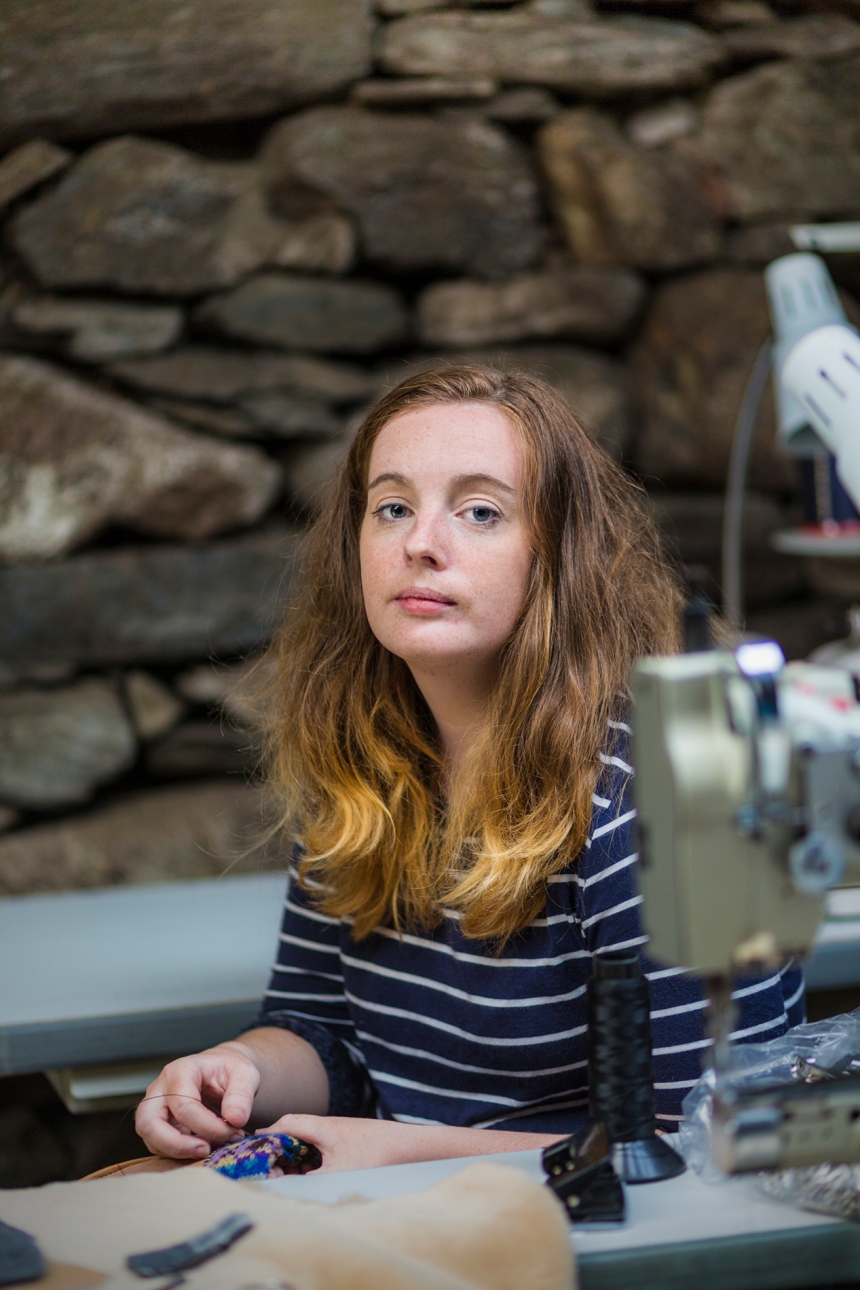
(Natalie, hand-stitching a sheepskin slipper)
You’ll meet Natalie again in the pages of our now-imminent Shetland Oo book, which will be published next week. You can find the Shetland Tannery online here, or, better still, visit Natalie’s workshop near Ollaberry next time you are in Shetland. Natalie is also on Instagram: @shetlandtannery


Thanks a lot for the information. We are fur tannery in Belarus. We are interested in cooperation. Please contact me: i.grigorik@marko.by
Tnaks a lot! regards, Irina
LikeLike
We are now the proud owners of an unbelievable reindeer hide and soft cozy sheepskin slippers. The quality is incredible – the reindeer skin is so soft and luxurious. We are NOT using it as a floor rug, rather as a chair cover! The hide is so soft, supple and white, and the fur is so soft! We are debating who gets to sit in that chair! And my slippers are so toasty warm!
Thank you Kate for writing about Natalie and her business and how she saves items from being discarded or destroyed. We will be enjoying these “byproducts” for many years!
LikeLike
So agree it is wonderful to see someone who has taken a grim waste product and turned it into something beautiful and useful.
LikeLike
This posting is so wonderful and certainly made my day -week-year. Really made me feel life will go on – even after Trump.
LikeLike
Thank you Kate for sharing this article! Natalie… keep up the awesome work!! We also utilize as much from our lambs here in Virginia USA; from the manure for the garden to beautiful pelts from the tanner. Sheep give us so much! (food, ‘clothing’, and joy!!) What a beautiful creature God has made!!
LikeLike
Whilst I do understand that this is a byproduct which would just have been discarded, whenever I see an animal skin I feel some sadness because the original owner is dead and for that reason I never support any company which trades in skins or fur. And before I get lots of bad replies, I too have a right to an opinion 🙂
LikeLike
I think that’s a great and admirable opinion, but have to wonder – are you a vegetarian? I feel some of the same sadness, but as Natalie is careful to point out, her product is a by-product of the meat industry. As long as we are willing to eat meat, we should also use as much of the animal as possible in order to respect the sacrifice it made for us.
LikeLike
You mentioned the beautiful “shaela” sheepskin in your post. Can you explain the meaning of shaela please?
I’m forever being asked the meaning of my name!
Shaela
LikeLike
You have a great name, Shaela! As I understand it, its a sort of complex, slate-grey fleece colour.
LikeLiked by 1 person
Thank you–wonder if that’s why I’m dressed in shades of grey and black again—with a bright red shawl
LikeLike
How interesting & coincidental — I too, at the moment am dressed in shades of grey & I have a bright red scarf on. In light of that, I thought it would be a good idea to order some Shetland rugs — so I have. One Shaela and one Moorit — Christmas presents for my DH & me!
LikeLike
A pleasure to read…very much looking forward to the Shetland Oo book.
The social side of any community, especially island life, has always fascinated me. I’m a Yorkshire lass but I’m also very lucky to have a home on Orkney, which we visit as often as possible.
My observations of both Shetland and Orkney are that the local skills, and products produced are of an extremely high standard.
LikeLike
What an important post, Kate. I am so glad you and Tom are including Natalie and her business in your book. I have always been horrified at the waste from the meat industry and it so good to see some of that changing. This is REAL sustainability.
LikeLiked by 1 person
Lovely post. I visited Shetland Tannery this summer and was impressed with Natalie’s entrepreneurial spirit and also with her practical mindset–make of use materials that would otherwise go to waste. I wanted to snap up everything in her workshop but stopped at buying a gorgeous cowhide rug. Thanks for featuring these beautiful and important products.
LikeLike
I have a huge soft spot for sheep and sheep skins, so thank you for sharing this story and interview with us.
It is interesting that an old dying craft has been learnt by someone who had no previous experience but was genuinely interested. It shows the power of one’s love and dreams.
LikeLike
What a talented and determined young woman. I think you might have given me a couple of great ideas for real value (by that I mean the value of the real) Christmas presents!
LikeLiked by 1 person
I absolutely loved this post, it is so good to read about people sticking to local traditions and even better that they had totally revived a dying skill. With many ancestors from the Scottish Islands I always enjoy reading your articles immensely. Have a lovely Sunday xx
LikeLike